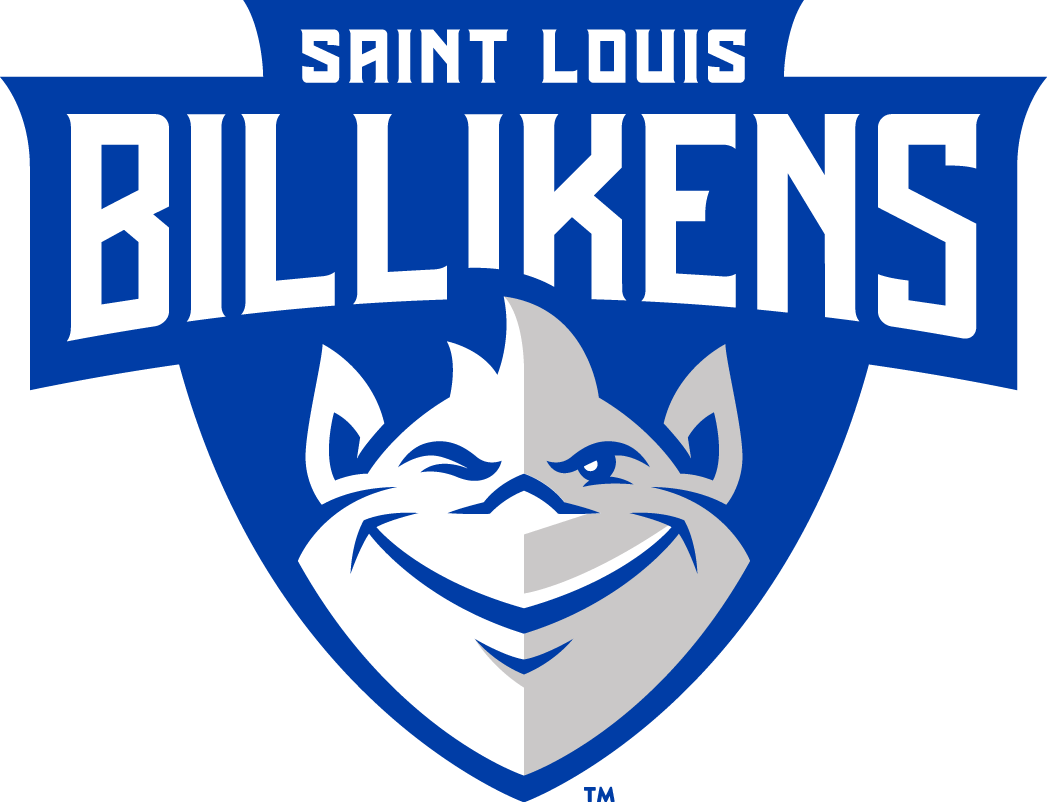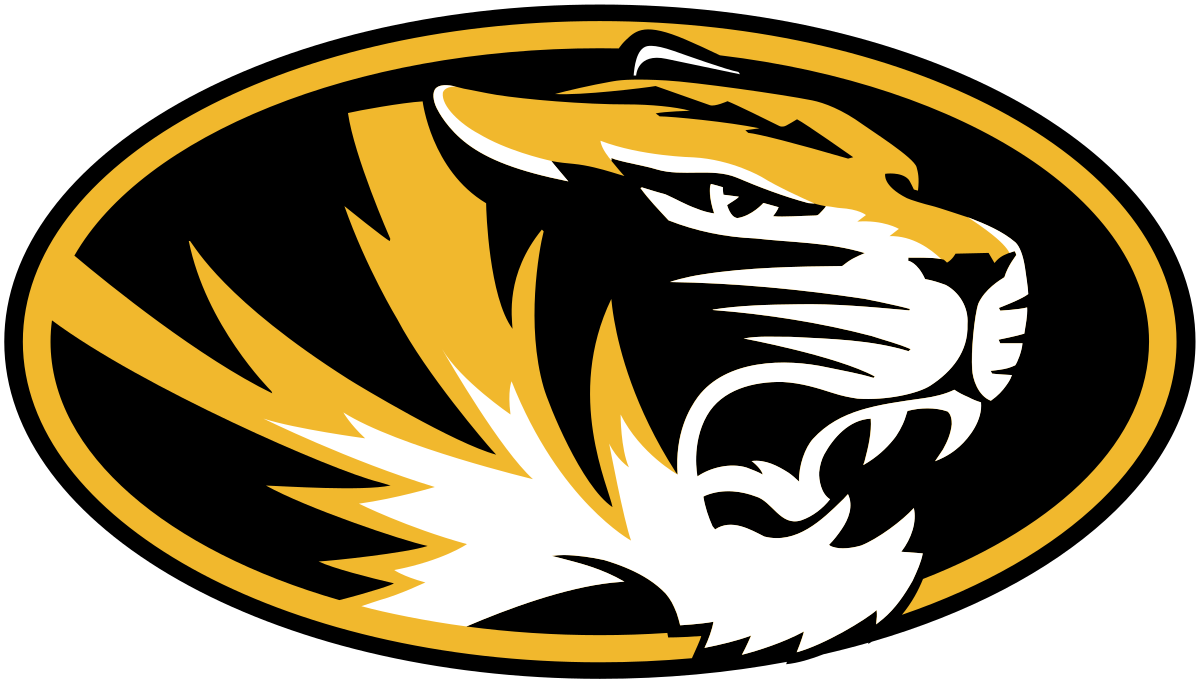BRIDGEPORT, Pa. — The Men’s Collegiate Club Division Spotlight completes it run in the Missouri Valley Division of Lindenwood University “A”, Lindenwood University “B”, McKendree University, Missouri University of Science & Technology, Saint Louis University and Washington University in St. Louis.
HISTORY: The home of programs holding 10 Division III and five National Collegiate Club Championship over the past 14 seasons since 2006, the Missouri Valley Division is arguably the most successful division in the history of men’s collegiate club competition.
Lindenwood holds the most National titles between the programs as the Lions racked up back-to-back-to-back Division III crowns in 2006, 2007 and 2008 prior to moving into the National Collegiate Club Championship ranks and reeling off a quintet of titles in 2014, 2015, 2016, 2018 and 2019 along with a runner-up mark in 2013.
Washington has been the preeminent force on the Division III ranks since 2011 as the Bears have mauled their way to seven championships (2011, 2014, 2015, 2016, 2017, 2018, 2019) and a pair of second place marks (2012, 2013) thanks to appearing in nine consecutive National title games.
On the division level, the Lions of Lindenwood have led the pride with 13 Missouri Valley championships (2005, 2006, 2008, 2009, 2010, 2012, 2013, 2014, 2015, 2016, 2017, 2018, 2019) and a pair of runner-up marks (2007, 2011) as the team has appeared in 15 consecutive division title tilts in the 16-year history of the grouping. The run marks the most division championships claimed by any collegiate water polo program – varsity, collegiate club – irregardless of level, gender or athletic conference over that stretch.
No other team has more than one championship in the history of the Missouri Valley Division Saint Louis and division members Miami University (Ohio) and Western Illinois University earned W’s in the 2011, 2007 and 2004 title games, respectively.
Saint Louis holds the second most title game appearances behind Lindenwood with five as the Billikens placed second in 2009, 2010, 2012 and 2013 to accompany their 2011 win. Washington is close behind with four runner-up finishes (2004, 2005, 2015, 2017), while the Lindenwood “B” team has also appeared in the title game three times (2014, 2018, 2019) falling to the institution’s “A” team in each clash.
Miami (Ohio) made the title game twice with a runner-up mark in 2006 to go along with its 2007 championship, while fellow former division members Western Illinois (2004) and the University of Illinois-Chicago (2008) have both appeared in the title game once.
Missouri Valley Division Champion/Runner-Up
- 2004 – Western Illinois University / Washington University in St. Louis
- 2005 – Lindenwood University / Washington University in St. Louis
- 2006 – Lindenwood University / Miami University (Ohio)
- 2007 – Miami University (Ohio) / Lindenwood University
- 2008 – Lindenwood University / University of Illinois-Chicago
- 2009 – Lindenwood University / Saint Louis University
- 2010 – Lindenwood University / Saint Louis University
- 2011 – Saint Louis University / Lindenwood University
- 2012 – Lindenwood University / Saint Louis University
- 2013 – Lindenwood University / Saint Louis University
- 2014 – Lindenwood University / Lindenwood University “B”
- 2015 – Lindenwood University / Washington University in St. Louis
- 2016 – Lindenwood University / McKendree University
- 2017 – Lindenwood University / Washington University in St. Louis
- 2018 – Lindenwood University / Lindenwood University “B”
- 2019 – Lindenwood University / Lindenwood University “B”
Division III National Collegiate Club Champion/Runner-Up
- 2006 – Lindenwood University / Wesleyan University
- 2007 – Lindenwood University / Grinnell College
- 2008 – Lindenwood University / New York University
- 2011 – Washington University in St. Louis / Bowdoin College
- 2012 – Monmouth College / Washington University in St. Louis
- 2013 – University of California-Santa Cruz / Washington University in St. Louis
- 2014 – University of California-Santa Cruz / Washington University in St. Louis – Co-Champions
- 2015 – Washington University in St. Louis / Middlebury College
- 2016 – Washington University in St. Louis / Carnegie Mellon University
- 2017 – Washington University in St. Louis / Tufts University
- 2018 – Washington University in St. Louis / Tufts University
- 2019 – Washington University in St. Louis / New York University
National Collegiate Club Champion/Runner-Up
- 2013 – University of California-Los Angeles / Lindenwood University
- 2014 – Lindenwood University / San Diego State University
- 2015 – Lindenwood University / San Diego State University
- 2016 – Lindenwood University / Long Beach State University
- 2018 – Lindenwood University / University of Utah
- 2019 – Lindenwood University / University of Southern California
THE TEAMS: Created in 2004 to compensate for the growth of men’s collegiate club water polo in the Missouri/greater St. Louis area, the Missouri Valley Division has been a force over its 16-year history on the national stage.
 Lindenwood University
Lindenwood University
A three-time Division III (2006, 2007, 2008) and five-time National Collegiate Club (2014, 2015, 2016, 2018, 2019) Champion, the Lions of Lindenwood University are without question the most successful men’s collegiate club water polo team in the history of the sport.
A 14-time Missouri Valley Division Champion (2005, 2006, 2008, 2009, 2010, 2012, 2013, 2014, 2015, 2016, 2017, 2018, 2019) and two-time runner-up (2007, 2011), Lindenwood has missed out on only one title game appearance in the 16-year history of the group by finishing in Third Place in 2004. Further three-times (2014, 2018, 2019), including the past two Missouri Valley Division title tilts, the Lindenwood “A” and “B” teams have clashed for the crown and a berth to the National Collegiate Club Championship.
The reigning Men’s National Collegiate Club Champion thanks to a 9-5 defeat of the University of Southern California at the University of Pittsburgh’s Trees Pool on November 17 during the 2019 national championship game, Lindenwood is tied with California Polytechnic State University (1999, 2001, 2002, 2004, 2007) for the most National Collegiate Club Championship crowns in the history of men’s club water polo.
Overall, Lindenwood has finsihed First (2014, 2015, 2016, 2018, 2019), Second (2013), Fifth (2009), Sixth (2010), Seventh (2012) and Ninth (2017) at the Men’s National Collegiate Club Championship to stand among an elite group that has more than five finishes and never placed outside the Top 10 in their appearances at the event.
Prior to last year, the Lions previously appeared in four consecutive National Championship games in falling to the University of California-Los Angeles in 2013 (20-15 L) before downing San Diego State University in 2014 (13-8 W) and again in 2015 (10-9 W) and Long Beach State University in 2016 (9-5 W). In 2018, Lindenwood topped the University of Utah (14-11 W) to capture the 2018 Men’s National Collegiate Club Championship.
Lindenwood is among select company as the school joins Cal Poly (2001, 2002), UCLA (2009, 2010), USC (2011, 2012) and themselves (2014, 2015, 2016) as the only programs to win consecutive National Collegiate Club Championships. Further, the Lions are the only team to win both Division III and National Collegiate Club Championships.
A private liberal arts university in Saint Charles, Missouri, Lindenwood was founded in 1827 by George Champlin Sibley, an early 19th-century American explorer, soldier, Indian agent and politician, and his wife Mary Easton Sibley as The Lindenwood School for Girls.
The second-oldest higher-education institution west of the Mississippi River, Lindenwood offers undergraduate, graduate, and doctoral degrees through nine colleges and schools. Its annual enrollment is more than 8,600 students on a 500-acre main academic and residential campus located 24 miles northwest of St. Louis.
Lindenwood offers 121 majors in diverse areas of study and confers degrees from 10 colleges and schools. In 2007, the school began offering doctoral programs, starting with a Doctorate of Education program that prepares students for the field of educational administration.
Lindenwood’s student body comes from various locations across the United States, Canada, and other worldwide locations. Approximately 64% of the school’s student body is from Missouri with the majority of in-state students from St. Charles and St. Louis counties. Out-of-state students represent 22% of undergraduate enrollment and are made up of students from 45 of the 50 US states. In addition, 13% of students are from 60 foreign countries.
For more information on the Lindenwood men’s collegiate club team, contact Mitch Griffin (mlg681@lindenwood.edu).
- Facebook (@LindenwoodMensWaterPolo)
- Instagram (@luwaterpolo)
- Twitter (@LUwaterpolo)
- Website (lindenwoodlionssls.com/index.aspx?path=mpolo)
McKendree University
The Bearcats of McKendree University hold a unique position in the Missouri Valley Division as the institution fields both men’s varsity and collegiate club teams.
The 2016 Missouri Valley Division runner-up, McKendree is a private university in Lebanon, Illinois. Founded in 1828 as the Lebanon Seminary, it is the oldest college or university in Illinois. McKendree enrolls approximately 2,300 undergraduates and nearly 700 graduate students representing 25 countries and 29 states. In the undergraduate program, on average there are 51% females and 49% males. The institution remains affiliated with the United Methodist Church. The school was renamed McKendree University beginning with the 2007–08 academic year and comprises a College of Arts and Science, a School of Business, a School of Health Professions, and a School of Education.
Named for Bishop William McKendree, the first American-born bishop of the Methodist church, the school confers degrees from four colleges and schools and offers over 50 undergraduate majors, 45 minors, and master’s degrees in four areas: business administration, criminal justice, education, nursing and clinical mental health counseling. McKendree also offers a doctoral program in education, with the opportunity for teachers and administrators to earn a specialist degree.
For more information on the McKendree men’s collegiate club team, contact Zach Roper (zwroper@mckendree.edu).
- Facebook (@McKendreePolo)
- Instagram (@mckendreepolo)
- Twitter (@McKendree_Polo)
- Website (mckbearcats.com/index.aspx?path=mwpolo)
 Missouri University of Science & Technology
Missouri University of Science & Technology
The newest active program in the group, the Missouri University of Science & Technology joined the Missouri Valley Division in 2015.
A public university in Rolla, Missouri, and a member institution of the University of Missouri System, the school had 8,096 students in the Fall of 2019 studying engineering, business, sciences, and mathematics. Known primarily for its engineering school, Missouri S&T offers degree programs in business and management systems, information science and technology, sciences, social sciences, humanities and arts.
The school was founded in 1870 as the Missouri School of Mines and Metallurgy (MSM), the first technological learning institution west of the Mississippi River. Known at the University of Missouri-Rolla, the name was changed to Missouri University of Science and Technology or Missouri S&T for short, on January 1, 2008. The name was changed due to statistics as 70 percent of the institution’s enrollment was in engineering and more than 90 percent was in engineering, business, science and math—significantly higher than engineering schools such as the Massachusetts Institute of Technology, Georgia Institute of Technology, and Rensselaer Polytechnic Institute. Due to this, a name that included its primary enrollment focus was appropriate.
Ranked #3 by US News & World Report to receive an engineering degree, the home of the Miners – as the school’s athletic teams are known – is renowned for its unique architecture.
Missouri S&T Stonehenge is a partial reconstruction of the original Stonehenge monument located on Salisbury Plain, in southern England. Missouri S&T’s version of the ancient structure is located on the northwest corner of campus, and was dedicated on June 20, 1984 during the summer solstice. It features a 50-foot diameter ring of 30 stones around a horseshoe of five trilithons through which various sightings of sunrise and sunset can be made. About 160 tons of granite were used to construct the monument. The rock was cut by Missouri S&T’s water jet cutter equipment slicing across the surface just like a conventional saw. After completion, Missouri S&T Stonehenge received an award from the National Society of Professional Engineers for being one of 1985’s Ten Outstanding Engineering Achievements.
Further, the school operates the 200 kW Missouri S&T nuclear reactor on-campus for educational, training and research purposes. It became the first nuclear reactor to become operational in Missouri and first achieved criticality in 1961.
A limestone mine is located near the main campus and is used for the teaching and research activities of the Department of Mining Engineering. The facilities, which cover 25 acres, include the mine and adjacent surface dolomite quarries. The mine supports student competition teams, such as the mine rescue team, and the annual “Haunted Mine” Halloween event. The mine has been used by the school since 1921.
St. Patrick’s Day is the largest annual celebration and predominant cultural event at Missouri S&T, with each year’s observance touted as the “Best Ever!”. During St. Pat’s, students wear green sweatshirts (which are sold as fund-raisers throughout the season), carry shillelaghs and party. One tradition, observed primarily among fraternities, is the “killing” of rubber snakes in commemoration of St. Patrick’s mythical banishing of snakes from Ireland. Along with snake invasion comes the tradition of Follies. Students meet daily at “the Puck” (a short cylindrical stage bearing a large shamrock) to hear jokes and participate in short competitions. On the third day of Follies, students move to the town’s band-shell to participate in the ceremonial arrival of St. Pat’s Court. The day after Follies, students participate in “Gonzo and Games”. Gonzo and Games are two days of elaborate games in which different organizations compete. Friday of St. Pat’s week is concluded with Coronation, a ceremony where the Queen of Love and Beauty is announced. The final event of St. Pat’s week is a Saturday morning parade on Pine Street, which is painted green by St. Pat’s Board Alumni. This parade is known throughout the United States and boasts well over one hundred floats and participating groups. The rationale for the celebration is the notion that St. Patrick is the patron saint of engineers. The recognition of St. Patrick as the “Patron Saint of Engineers” began in 1903 when the Engineering students of the University of Missouri in Columbia claimed St. Patrick’s Day to be a holiday for engineers. The tradition has remained to this day and has been adopted by many other schools across the nation. St. Patrick’s Day 2008 marked the one hundredth consecutive year of St. Patrick’s Day celebrations at Missouri S&T.
For more information on the Missouri S&T men’s collegiate club team, contact Natha Burlis (nnb2p3@mst.edu)
- Website (mst.campuslabs.com/engage/organization/water-polo-club)
Saint Louis University
Saint Louis University, which competed as an exhibition team during the 2019 season, is one of four teams to win a Missouri Valley Division Championship in the history of the group. The 2011 champion, Saint Louis joins former division members Western Illinois University (2004) and Miami University (Ohio) (2007) along with 13-time winner Lindenwood University in accounting for the 16 previously contested title game victories.
A private Jesuit research university with campuses in St. Louis, Missouri, United States, and Madrid, Spain, the school was founded in 1818 and is the oldest university west of the Mississippi River. It has an enrollment of 12,546 students with an additional 7,101 students enrolled in its 1818 advanced college credit program. The 2019-20 student body included 8,072 undergraduate students and 4,474 graduate students that represents all 50 states and more than 82 foreign countries. Its average class size for undergraduates is 26 and the student-faculty ratio is 9:1.
For more than 50 years, the university has maintained a campus in Madrid, Spain. The Madrid campus was the first freestanding campus operated by an American university in Europe and the first American institution to be recognized by Spain’s higher education authority as an official foreign university.
SLU offers 91 undergraduate majors and 83 graduate disciplines, along with programs adapted to working adults at both the undergraduate and graduate levels, including 25 completely online programs.
The University operates under one overall president but has the following schools with their own deans or directors: College of Arts and Sciences, College of Philosophy and Letters, Doisy College of Health Sciences, School of Medicine, School of Nursing, Center for Advanced Dental Education, College for Public Health and Social Justice, School of Social Work, Richard A. Chaifetz School of Business, School of Education, School of Law, Parks College of Engineering, Aviation and Technology, Campus in Madrid (Spain), School for Professional Studies, Center for Outcomes Research.
The school’s mascot of the Billikens is unique. It is believed the name is derived from an early SLU football coach, John R. Bender. During the 1911 season, according to one version of the story, local sportswriters commented that Bender bore an uncanny resemblance to a charm doll called a Billiken, which was a national fad at the time. His squad became known as “Bender’s Billikens” and the name stuck. A Billiken is defined as a monkey-like creature with pointed ears, a mischievous smile and a tuft of hair on his pointed head. His arms are short and generally sits with his legs stretched out in front of him. Billiken is known as “The God of Things as They Ought to Be”. To buy a Billiken was said to give the purchaser luck, but to receive one as a gift would be better luck. It is believed that American art teacher and illustrator, Florence Pretz of Kansas City, Missouri, who came up with the creature/doll after having seen the mysterious figure in a dream found the name Billiken in Bliss Carman’s 1896 poem “Mr. Moon: A Song Of The Little People”.
For more information on the Saint Louis men’s collegiate club team, contact Griffin LeBeau (griffin.lebeau@slu.edu).
- Facebook (@sluwopo)
- Twitter (@SLUMensPolo)
- Website (groups.sluconnection.com/organization/sluwaterpolo)
 University of Missouri
University of Missouri
The 2002 Great Plains Division runner-up, the Tigers of the University of Missouri joined the Missouri Valley Division in 2004 and remains a staple in the Missouri Valley Division.
Known as Mizzou or simply Missouri, the school is a public research university in Columbia, Missouri. It is Missouri’s largest university and the flagship of the four campus University of Missouri System. Founded in 1839, it was the first public university west of the Mississippi River.
Enrolling over 30,000 students in 2020 with a 78.1% admission rate, Missouri offers over 300 degree programs in 13 major academic divisions. Its well-known Missouri School of Journalism was founded by Walter Williams in 1908 as the world’s first journalism school; It publishes a daily newspaper, the Columbia Missourian, and operates an NBC affiliate KOMU. The University of Missouri Research Reactor Center is the world’s most powerful university research reactor and is the United States’ sole source of isotopes used in nuclear medicine. Further, the tradition of homecoming is claimed to have originated at Missouri.
For more information on the Missouri men’s collegiate club team, contact either Ethan Reding (egrhf7@mail.missouri.edu) or Alex Burke (mizzouwaterpolo@gmail.com).
- Website (muwaterpolo.wordpress.com/)
Washington University in St. Louis
The 2011, 2014, 2015, 2016, 2017, 2018 and 2019 Men’s Division III Collegiate Club National Champion, the Bears of Washington University in St. Louis rate as the most successful small college program in the history of the sport.
A four-time Missouri Valley Division Championship runner-up (2004, 2005, 2015, 2017), Washington has appeared in the Division III National Championship game nine times with second place marks in 2012 and 2013. The program’s 2014 Division III National Championship was unique as a power failure at host Bowdoin College in Brunswick, Maine, prevented the title tilt between the Bears and the Banana Slugs of the University of California-Santa Cruz from being contested. Both Washington and UC-Santa Cruz were declared co-National Champions marking the only occurrence of the event in the history of collegiate water polo (varsity and/or club).
The school does hold one division championship as the team claimed the 2002 Great Plains Division title prior to notching a second place finish in 2003 and moving to the Missouri Valley Division in 2004.
Founded in 1853, and named after George Washington, the university has students and faculty from all 50 U.S. states and more than 120 countries. As of 2019, 24 Nobel laureates in economics, physiology and medicine, chemistry, and physics have been affiliated with Washington, nine having done the major part of their pioneering research at the university. In 2019, Clarivate Analytics ranked Washington seventh in the world for most cited researchers.
Comprised of seven graduate and undergraduate schools that encompass a broad range of academic fields, Washington received the fourth highest amount of National Institute of Health (NIH) medical research grants among medical schools in 2019. The university was ranked as tied for first in the United States for genetics and genomics alongside Stanford University and the Massachusetts Institute of Technology (MIT) by U.S. News & World Report in 2018.
The school holds some unique marks and rankings:
- The school was founded by 17 St. Louis businessmen, including inaugural Board of Trustees Chairman William Greenleaf Eliot, grandfather of the poet T.S. Eliot.
- Washington University has been selected by the Commission on Presidential Debates to host more presidential and vice-presidential debates than any other institution in history. United States presidential election debates were held at the Washington University Athletic Complex in 1992, 2000, 2004, and 2016. A presidential debate was planned to occur in 1996, but owing to scheduling difficulties between the candidates, the debate was canceled. The university hosted the only 2008 vice presidential debate, between Republican Sarah Palin and Democrat Joe Biden, on October 2, 2008, also at the Washington University Athletic Complex. The university hosted the second 2016 presidential debate, between Republican Party candidate Donald Trump and Democratic Party candidate Hillary Clinton, on October 9, 2016. The school elected not to host a debate in 2020.
- The acceptance rate for the class of 2024 (those entering in the fall of 2020) was 12.8%, with students selected from more than 27,900 applications. Of students admitted, 92 percent were in the top 10 percent of their class.
- The Princeton Review ranked Washington University first for Best College Dorms and third for Best College Food, Best-Run Colleges, and Best Financial Aid in its 2020 edition. Niche listed the university as the best college for architecture and the second-best college campus and college dorms in the United States in 2020.
- The Washington University School of Medicine was ranked 6th for research by U.S. News & World Report in 2020 and has been listed among the top ten medical schools since the rankings were first published in 1987.
- U.S. News & World Report ranked the university’s genetics and physical therapy as tied for first place, while QS World University Rankings ranked Washington sixth in the world for anatomy and physiology in 2020.
For more information on the WashU men’s collegiate club team, contact either Michael Lorberg (mlorberg@wustl.edu) or Christian Olaya (christian.olaya@wustl.edu).
- Facebook (@WashUMensWaterPoloClub)
- Instagram (@WashUWaterPolo)
- Twitter (@WashUWaterPolo)
- Website (grouporganizer.wustl.edu/organization/waterpolo)

